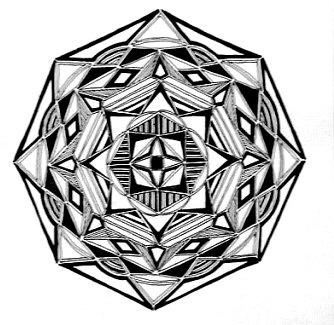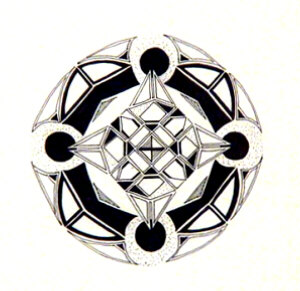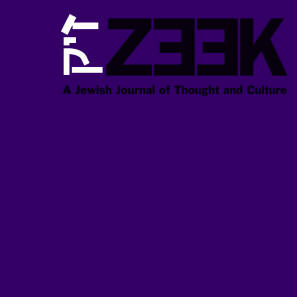 June 06
June 06
Contemporary Psychedelia: From Transcendence to Immanence
by Peter Bebergal
p. 2 of 2

3. The Other-Worldly and This
Music has long played an important role in religion, but the particular phenomena of the chant or other intonations has often been believed to be attuned to actual physical vibrations which have an effect on the actual body. The mystical experience is not just about the mind, but the whole self as it exists in space. In this way, the tension inside the pysch-folk sensibility, particularly with drone, becomes less about East versus West and more about a primary tension within any mystical experience: how close can you get to God before you are shattered?
One of the remarkable ways in which hallucinogenics mirror what we might call a traditional mystical experience is in the tension between the knowable and the unknowable. The psychedelic experience is often one of wavering between bliss and terror, between touching the fire of the holy and in turn being burned up by it. In all the great myths and religious traditions there are stories of mortals being warned to not try to get too close to the gods. And yet, almost all these traditions include stories of face-to-face encounters with the holy, what the theologian Rudolf Otto calls the mysterium tremendum, and which, according to Otto, is the only truly authentic relationship one can have with God. It is Moses coming down from Sinai as “the skin of his face was shining”; it is Jacob after seeing the angels descend and ascend who proclaims, “How awful is this place.” And so the very telos of the mystical experience is one that is fraught with danger. Ezekiel sees the chariot and all its glory, but Moses is told by God “No one shall look up upon me and live.”
Psych folk, when done well, can gracefully inhabit this space. This also means the music is often not what might be called joyful, but is rather filled with sounds of dread, of melancholy, of the noise in the soul as you realize your incantation actually worked and God is staring at you from the inside of the grove. For Weeks, this takes place less in the music itself, but in the performance: “Most any performer will tell you that the synergy and/or chemistry ignited while playing (and especially improvising) with other musicians is ‘magical,’ or ‘spiritual.’ I’ve never experienced anything like it outside of performance.”
Psych folk that employs the drone also plays in an important role in the cultural disconnect that is often part of using hallucinogens. There is important work being done regarding the efficacy of hallucinogens and spirituality. A new generation of psychedelic anthropologists, including Daniel Pinchbeck and Jeremy Narby, is trying to return the use of hallucinogenics back to their indigenous use, rooted in shamanism and ritual practice. But being able to take ayahuasca with the natives is not easy for the average seeker. Dropping a few hits of smiley-face blotter acid will likely only mimic a mystical state while the playing of music can itself become a vehicle for entering into an authentic altered state. Gubler explains, “Music itself can be more effective in producing a profound effect on a person. I think drugs can possibly amplify or enhance an experience, but drugs can also get in the way and in fact detract. I remember being younger and reading about the Merry Pranksters and kind of romanticizing the idea of a psychedelic experience being a truly spiritual one, but I found that in my own experimentation with drugs that didn't really happen for me. Comparatively, with music there have been many times in my life where I've been able to go somewhere else in my mind.”
Psych folk taps into this dichotomy even more than traditional 60s space-out psychedelia because its very affect seems rooted in actual experience, not pop pretension about being “mystical.” The Electric Prunes’s “I Had Too Much to Dream Last Night,” one of the great psychedelic rock songs of the 60s, has a somewhat empty spiritual conceit. The folk underpinnings of psych folk keep it all so grounded. The Castanets, a band characterized by a kind of American Gothic roots sound, reveal this even in their lyrics:
What good these myriad mythologies
And what good these magics not to be released
And what good unknowable divinity
If it's not the world?
The folk element shows that only in the world can the mystical experience have a peculiar character. Ascending to great mystical heights is not the point. Rather, the roots sound theurgically draws down the holy. Put theologically, the difference between space-out and psyche-folk is the difference between ascent and descent. We find a similar difference  in the historical shift from Classical Kabbalistic to Hasidic mysticism. The former is mainly concerned with the experience of an other-worldly unity, most often in solitary communion. Hasidism sought to take whatever knowledge is gleaned from study and ritual and bring it to bear in the world as an ethical encounter. Where the mystic seeks to ascend the sefirotic tree towards the transcendent God, the Hasidic Zaddik, as Gershom Scholem explains, “is occasionally compelled to descend to a lower or even dangerous plane in order to rescue the scattered sparks of light…” to repair the world.
in the historical shift from Classical Kabbalistic to Hasidic mysticism. The former is mainly concerned with the experience of an other-worldly unity, most often in solitary communion. Hasidism sought to take whatever knowledge is gleaned from study and ritual and bring it to bear in the world as an ethical encounter. Where the mystic seeks to ascend the sefirotic tree towards the transcendent God, the Hasidic Zaddik, as Gershom Scholem explains, “is occasionally compelled to descend to a lower or even dangerous plane in order to rescue the scattered sparks of light…” to repair the world.
Arguably, the this-worldly orientation of contemporary psych folk -- it is perhaps no coincidence that today's musicians are interested in Kabbalah and Christian/Pagan systems as thought as much as Eastern ones -- makes it even truer to the psychedelic vision than the music of the 1960s. "The Sixties" as a cultural vision was born not only out of the drugs that fueled it, but the actual worldly situation. War, civil rights, sexual liberation, dastardly politics, created a need for a new holistic image of the universe. Eastern mysticism spoke to this need, with its teachings of the illusion of desire, the benefit of letting go of material goods, and its imagery: multi-headed colorful gods spinning around cosmic mandalas, free from the tether of technology and greed. But its politics were utopian, and thus ultimately unsuccessful.
For today's psych-folk musicians, spirituality exists in the tension between the great heights of ego-dissolution and the sunken buried claustrophobia of the self -- not in the escape from one to the other. Pysch folk, particularly with drone, can have the qualities of an incantation, of a spell, the words learned first as a prayer, but manipulated into something magical. And yet, there is something oddly pragmatic about it. Like any good folk music, it is the music of community, of simple songs that become part of an oral/musical tradition, music that can be passed on. The subversive side of psychedelia -- the effect pedals, reverb, looping -- means that the community that will sustain it is also one that is of the 21st century. This combination of technology and the echoes of British folk partly gives psych folk a pagan quality. But this peculiar brand of musical mysticism more readily evokes a kind of pantheism: Holiness is hidden in the world; the right tool, maybe the drone of a computerized loop, can be the incantation to set it free.
For further listening:
Skygreen Leopards Life & Love in Sparrow’s Meadow (Jagjaguwar)
Fursaxa Lepidoptera (Atp Recordings)
Espers II (Drag City [Caroline])
PG Six The Well of Memory (Amish)
Samara Lubelski Fleeting Skies (The Social Registry)
Six Organs of Admittance School of the Flower (Drag City [Caroline])
Castanets First Lights Freeze (Asthmatic Kitty )
Akron/Family s/t (Young God Records)
Vetiver To Find Me Gone (Dicristina Stair)
Animal Collective Feels (Fat Cat [Caroline])
Peter Bebergal is a new contributing editor and columnist here at Zeek. His monthly column, of which this is the first installment, will focus on intersections between spirituality and music.









